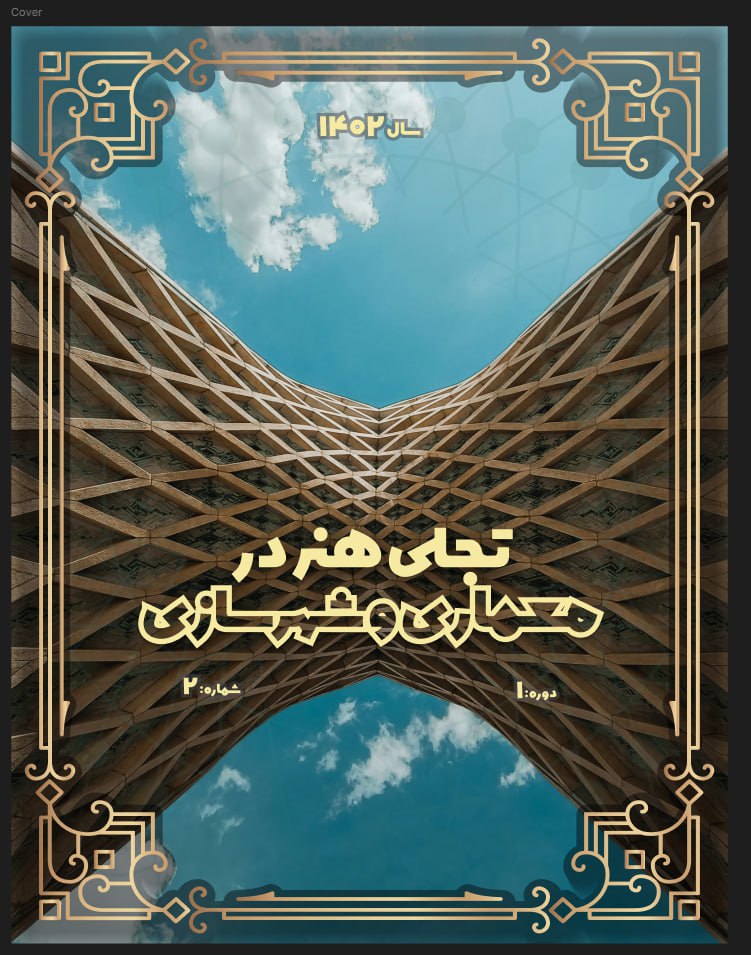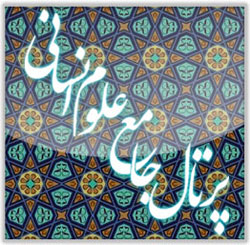The Visual Language in Qajar Siyah Mashq and the Analysis of Cultural and Artistic Influences on Contemporary Iranian Graphic Design (Based on Gérard Genette’s Theory)
Keywords:
Transtextuality, Qajar Siah-Mashq, Contemporary Iranian Graphic Design, Gérard Genette, Visual Language, Intertextuality, Cultural Identity, Modern AestheticsAbstract
In recent years, contemporary Iranian art—particularly graphic design—has undergone remarkable and extensive transformations, as artists have strived to create an innovative visual language. One of the most significant of these efforts is the deliberate use of Qajar Siyah Mashq calligraphy in the creation of contemporary graphic works. This practice not only draws upon the rich traditions and culture of Iran but also forges a link between the past and the present, leading to the emergence of a multilayered, autonomous, and dynamic identity in art. As a form of visual art, graphic design employs traditional elements such as calligraphy to reinterpret cultural, historical, and social concepts in a contemporary framework. In this study, drawing specifically on Gérard Genette’s theory of Transtextuality—which builds upon the earlier notion of Intertextuality proposed by Julia Kristeva—the influence of Qajar calligraphy on contemporary Iranian graphic design is examined. The aim is to explain how traditional written elements are transformed into a new and inspiring visual language that, while preserving cultural authenticity, also aligns with contemporary artistic and communicative needs. The study concludes that the interaction between tradition and modernity can provide a foundation for the emergence of a creative visual language that distinguishes contemporary Iranian graphic design from other styles and imbues it with a unique cultural depth.
Downloads
References
1. Namvar Motlagh B, Isvandi L. A Study of the Intertextuality of the Sacrifice of Abraham: Paintings by Rembrandt and Farshchian. Journal of the Academy of Arts. 2019;2(2):101-20.
2. Davoodi Ab Kenar A, Mostafaee Sa-M. An Essay on Defamiliarization in the Tradition of Iranian Calligraphy (A Case Study of Mirza Gholamreza Isfahani's Black Writing Works). Peikareh. 2021;10(25):67-76.
3. Kolahkaj M. The Impact of Social Change on One Hundred Years of Contemporary Iranian Graphics (According to the Theory of Social Change by Guy Roch Framework). Negarineh Islamic Art. 2021;8(21):98-111.
4. Isaghzadeh R, Sadeghian H, Rohani E. Comparison of Visual Balance in Nastaʿliq Calligraphy: Safavid and Contemporary Styles Based on the Works of Mir Imad and Gholam Hossein Amirkhani. Journal of Comparative Arts Studies. 2018;8(15):1-12.
5. Lechte J. Fifty Great Contemporary Thinkers from Structuralism to Postmodernism. Tehran: Khajasteh; 1994.
6. Genette G. Narrative Discourse: An Essay in Method: Organization for the Study and Compilation of Humanities Books of Universities (SAMT); 1972.
7. Genette G. Seuils: Édition du Seuil; 1987.
8. Kristeva J. Powers of Horror: An Essay on Abjection: Columbia University Press; 2024.
9. Meghdadi B. Encyclopedia of Literary Criticism: From Plato to the Present. Tehran: Cheshmeh; 2014.
10. Makarik IR. Encyclopedia of Contemporary Literary Theories: Agha; 1993.
11. Namvar Motlagh B. Intertextuality from Structuralism to Postmodernism. Tehran: Sokhan; 2016.
12. Allen G. Intertextuality. Tehran: Markaz; 2000.
13. Ahmadi B. Structure and Interpretation of Texts. Tehran: Markaz; 2013.
14. Barthes R. The Death of the Author. Art Magazine. 1994;25:377-81.
15. Ardelani H, Salimi H, Akbari M, Ghodrati H. The Embodiment of Emotion in Gilles Deleuze's Thought: (A Study of Francis Bacon's Paintings). Visual and Applied Arts. 2015;16(8):23-44.
16. Namvar Motlagh B. Transintertextuality: A Study of the Relations of One Text with Other Texts. Humanities Research Journal. 2007;56(Linguistics Special Issue):83-98.
17. Avazpour B. An Introduction to Art Theories. Tehran: Moqam Publishing; 2013.
18. Yamini M, Shari'at Panahi SM. Examination of Effective Factors in the Change of Nastaʿliq Script Style in Qajar Calligraphy. Nagharineh Islamic Art. 2016;3(12):20-32.
19. Sahra Gerd M. Naser al-Din Shah and Calligraphy. Golestan-e Honar. 2007;3(2):75-86.
20. Kamali Dowlat Abadi R. A Mystical Reading of the Foundations of Visual Arts. Tehran: Sooreh Mehr; 2017.
21. Lyotard J-F. The Postmodern Condition: A Report on Knowledge: Agah Publishing; 1979.
22. Reed H. Philosophy of Contemporary Art. Tehran: Negah; 1953.
23. Nozari HA. Postmodernity and Postmodernism: Definitions, Theories, and Applications. Tehran: Naghsh-e Jahan; 2000.
24. Pakbaz R. Encyclopedia of Art (New Edition). Tehran: Contemporary Culture; 2011.
25. Genette G. Palimpsests: Literature in the Second Degree: University of Nebraska Press; 1997.
Downloads
Published
Submitted
Revised
Accepted
Issue
Section
License
Copyright (c) 2025 Parisa Yazdani (Author); Salar Zohoori; Abolfazl Davodiroknabadi, Mahmoud Dehghanharati (Author)

This work is licensed under a Creative Commons Attribution-NonCommercial 4.0 International License.









